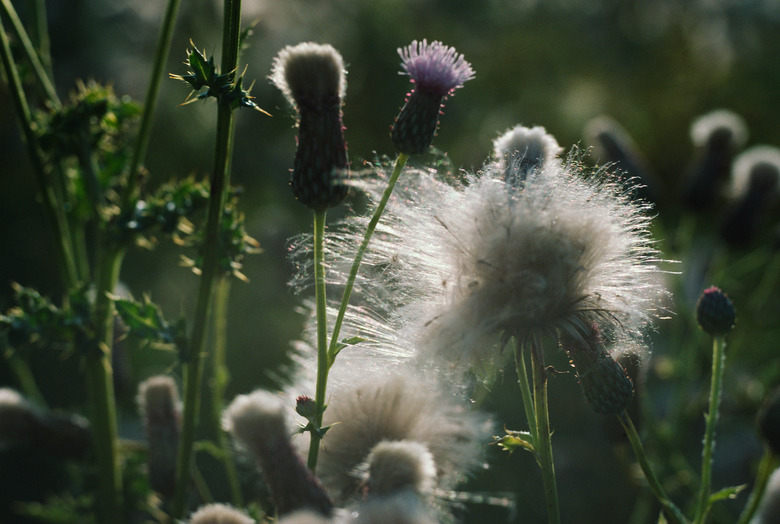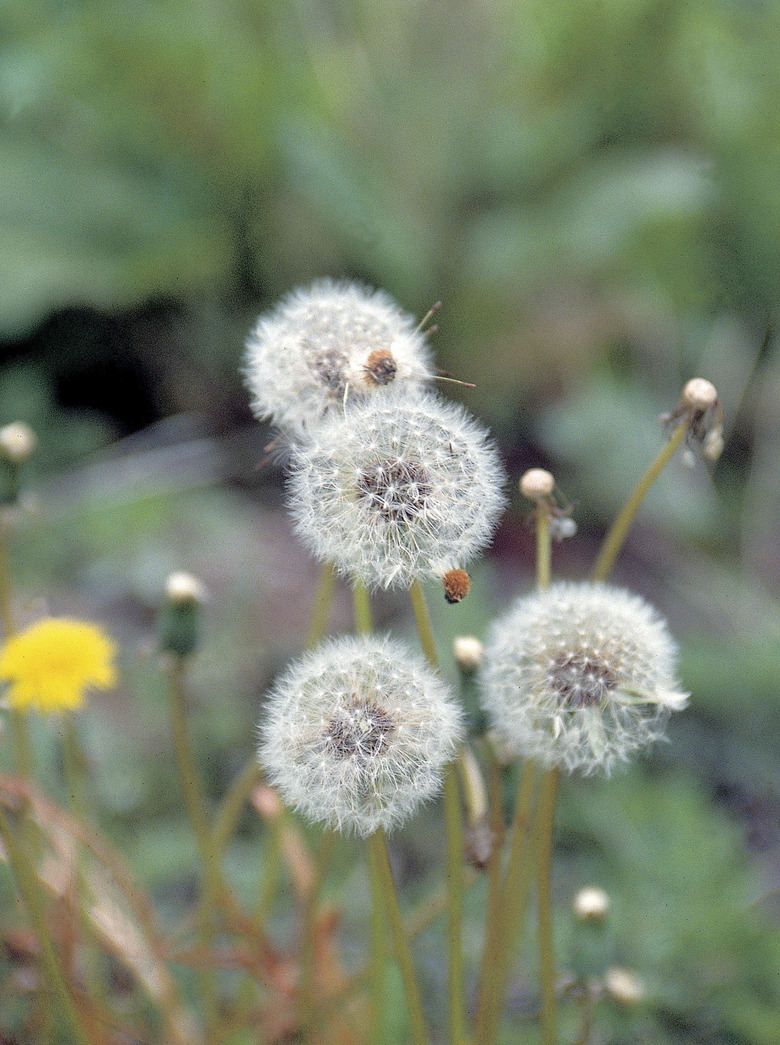The Identification Of Weeds In Indiana
Weeds may be defined simply as unwanted plants — for instance, the dandelion in your yard or garden. Weeds can be unattractive and troublesome for homeowners, farmers and in public lands, like forests. Some have even been designated as noxious and are required by law to be controlled. In Indiana weeds often interfere with growing crops or maintaining lawns.
Step 1
Certain weeds have been designated as so detrimental that there are laws intended to keep them from spreading. They can be destructive, take over existing vegetation and are difficult to control. Seven noxious weeds regulated in Indiana are Canada thistle, which has distinctive purple flowerheads on sturdy stalks; purple loosestrife, a semishrub with stalks of purple flower cluster; multiflora rose, which bears clusters of single white flowers; burcucumber, which bears clusters of spiky seeds; Columbus grass and shattercane, membes of the Sorghum genus with a grainlike appearance; and Johnson grass, which produces tall, thin stalks topped with several thin seedheads.
Poison Ivy and Cockleburs
Step 1
Poison ivy grows as a woody vine on the ground or trees, but when climbing a fence it can send out aerial roots. Leaves are trifoliate, with two close-set opposite leaves and a middle leaf extending out. This pattern led to the common saying "leaves of three, let them be," because poison ivy sap causes an allergic skin rash in many people. Cover skin when dealing with poison ivy and do not burn it, because the smoke can also cause an allergic reaction. Cockleburs are bushy plants with rough, broad, heart-shaped leaves that grow in Indiana's fields, roadsides and other sunny areas. The plants are toxic to farm animals. The oval, barbed seedburs can get matted into the fur of pets and should be removed immediately because they can cause skin irritation and are toxic if eaten.
Step 2
- Certain weeds have been designated as so detrimental that there are laws intended to keep them from spreading.
- Poison ivy grows as a woody vine on the ground or trees, but when climbing a fence it can send out aerial roots.
Common Lawn Weeds
Step 1
Weeds compete with grass for light, water and nutrients and reduce the uniform appearance many people want in their lawn. One such weed is crabgrass, which has wider leaves than turfgrass and sends out side shoots (like crab legs). Crabgrass can make the lawn look like it has clumps in it. Dandelions are Indiana's most common lawn weed and can easily be identified by their yellow flowers, which become white seedheads. Ground ivy (creeping charlie) is a very low-growing rhizome lawn weed with squarish stems and small scalloped leaves that tends to grow in shadier areas. Wild violets can be identified by their purple violet flowers in the spring or by their broad, heart-shaped leaves. Clover has the familiar three-part leaves and flowers in the summer. Clover and violets are often tolerated for their attractiveness in the lawn.
Step 2
- Weeds compete with grass for light, water and nutrients and reduce the uniform appearance many people want in their lawn.
- Dandelions are Indiana's most common lawn weed and can easily be identified by their yellow flowers, which become white seedheads.
Weed Control
Step 1
When plants are identified as weeds, or unwanted plants, the next step is weed control. Herbicides can be effective in preventing or killing weeds. Mowing at a higher height and proper watering can reduce weeds in a lawn, because a healthy turf makes it more difficult for weeds to germinate and grow. Mulching, hoeing and hand weeding are classic weed control methods. Biological or organic weed control products are also available.

